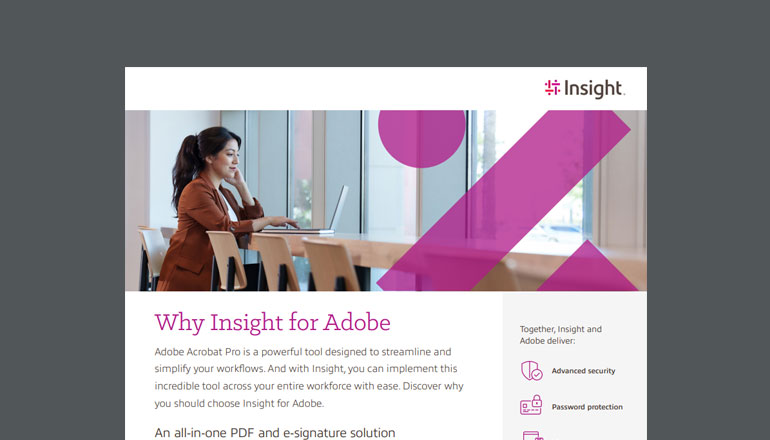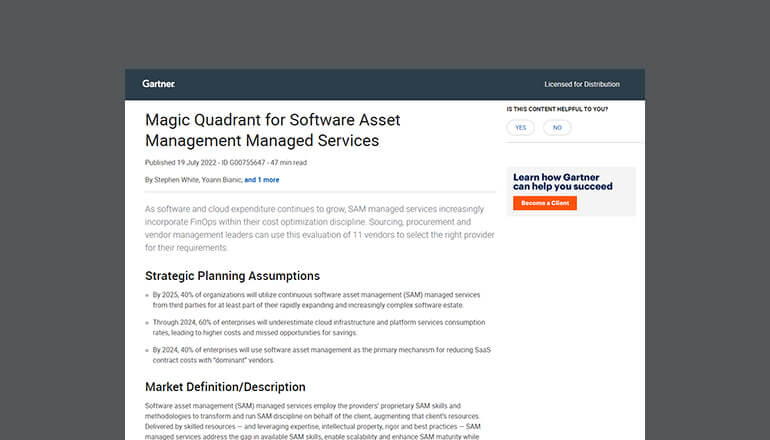Article 5 Software License Management Best Practices
Software audits are becoming an increasingly common part of life in enterprise IT. As the world shifts to a subscription-based model of software procurement, vendors are finding their margins being squeezed. As a result, they are looking for additional revenue streams and licensing is an easy target. According to Gartner, companies have a 68% chance of being audited by at least one software vendor this year, up from 54% five years ago.
By Insight Editor / 30 May 2018 / Topics: As a service Software

The repercussions of non-compliance are potentially severe and so it is vital that organisations take a proactive approach to license management.
It is all too easy to ignore software license management (SLM) until it’s too late. When it comes to software license management the best offence is a good defence. Here are our top tips for getting your house in order.
1. Start at the beginning
Of course, before you can implement an effective SLM strategy, you need to know what software assets exist in the first place. Auto discovery tools play a vital role in giving you a network-wide view of your software ecosystem. There are plenty of tools to choose from. Below are some of the attributes you should look for:
Scope – Look for a discovery tool that can assess the full scope of your IT estate, from desktops and virtual environments, to the data centre, the cloud and even mobile devices.
Agent and agentless – you should look for a tool that supports both to get a complete overview of your assets.
While technology can help you get a snapshot of your software estate, it’s also important that you talk to the people around you. Speak to colleagues, your service desk and line-of-business users about the technology they are using. This will help you build a complete picture.
2. Don’t try to boil the ocean
Software licensing has always been a tricky business; but with growing use of Software-as-a-Service and the prevalence of user-owned mobile devices, managing licenses has become infinitely more complex. Focus your initial efforts on licensing that is used across the organisation and provided by major vendors such as Microsoft, SAP and Oracle. You should prioritise your efforts based on risk to the overall organisation. Always start with the biggest areas of exposure.
3. Monitor usage
Once you have established your priorities, it’s time to begin software usage metering. You will typically need to monitor usage up to 60 days to be able to see any meaningful patterns in the data, but the timeframe can vary greatly depending on how the software is used within the organisation.
4. Put all of the pieces together
With a complete software inventory and your usage metering data, you are ready to fully assess your position. Compare your inventory and usage data with your purchasing records, to see whether your over-licensed or under-licensed.
5. Call in the professionals
If you feel you are at risk of non-compliance, it’s important that you act straight away. Particularly when it comes to the larger vendors, audits are not a matter of ‘if’ but ‘when’. If you have any doubts at all, it is beneficial to get professional advice from a licensing expert.
Insight’s License Consulting Service (LCS) helps organisations to get a complete view of their current licensing position. LCS works with businesses to build robust Software License Management policies that ensure compliance. From contract analysis and advice, to risk assessment and negotiation support, Insight LCS can provide your IT team with the information, tools and support you need to safely navigate the increasingly complex licensing landscape.


